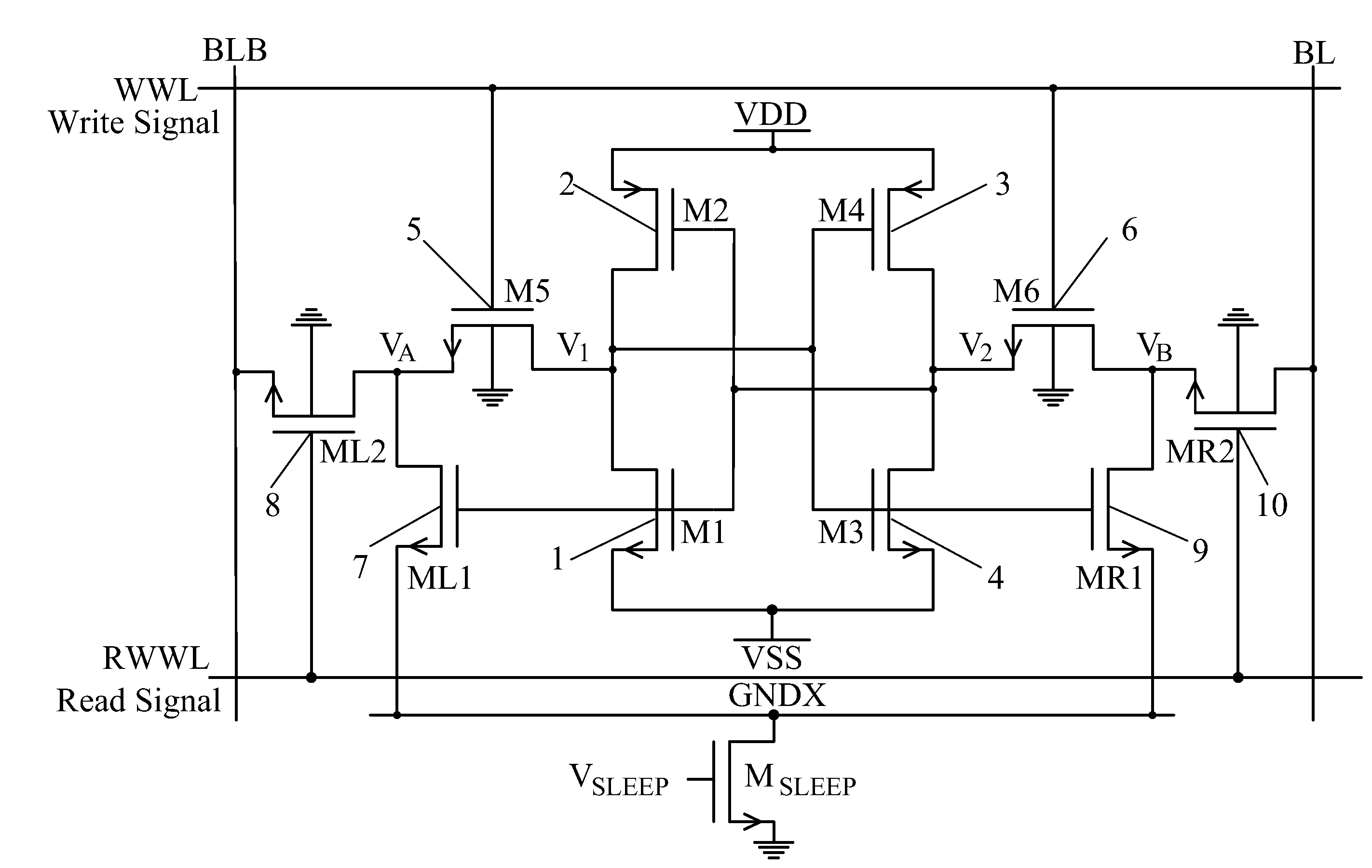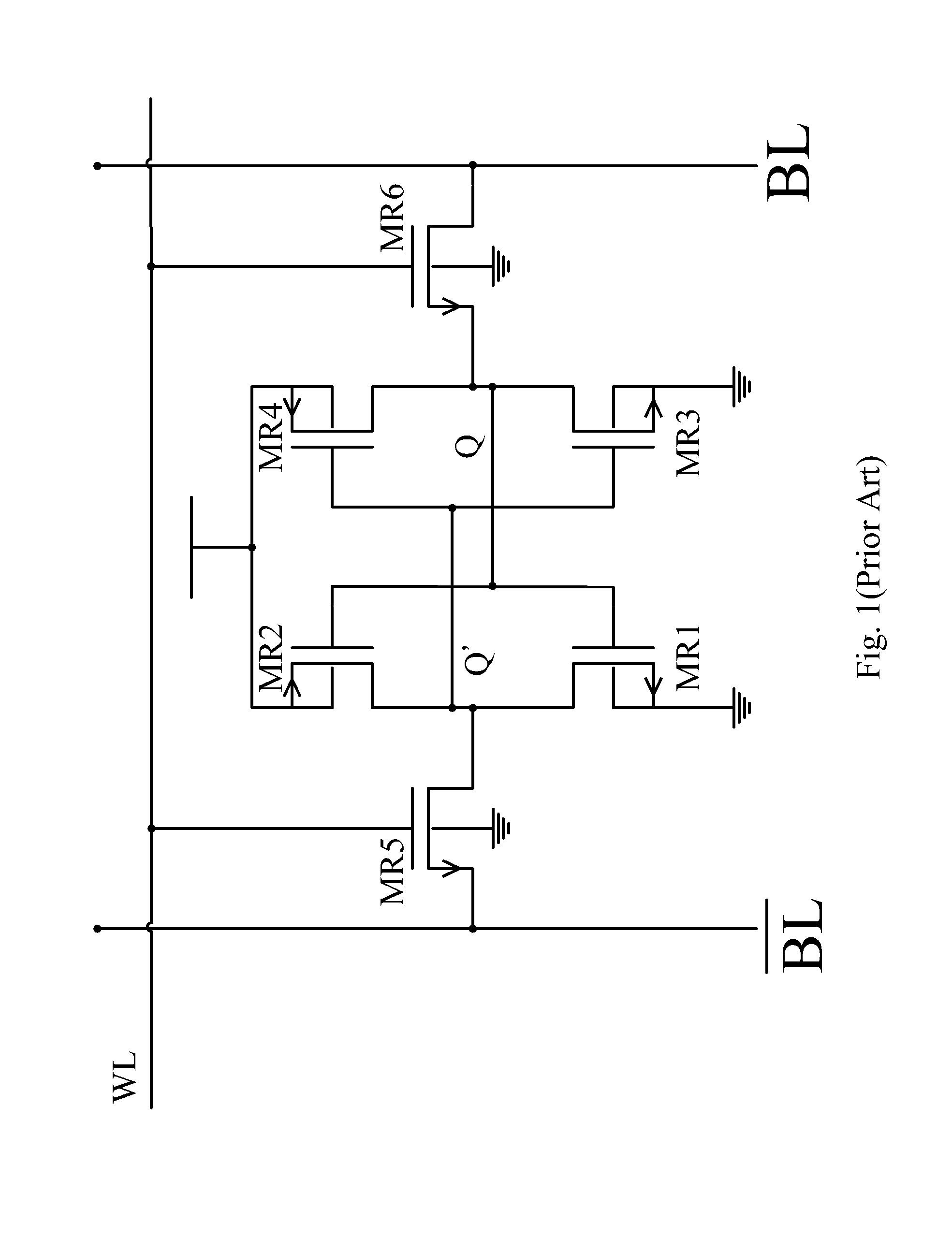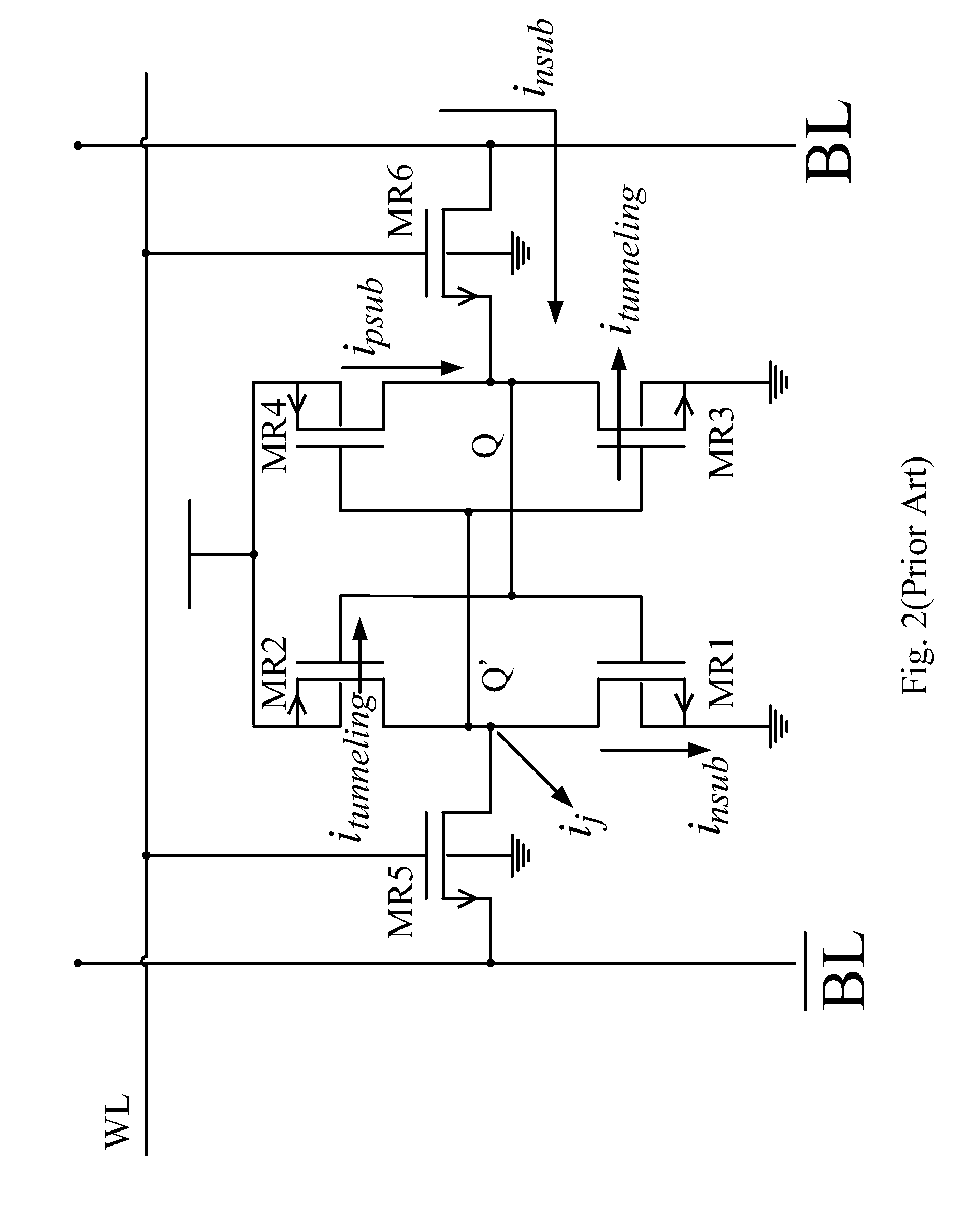Ten-transistor static random access memory architecture
- Summary
- Abstract
- Description
- Claims
- Application Information
AI Technical Summary
Benefits of technology
Problems solved by technology
Method used
Image
Examples
Embodiment Construction
[0014]The present invention discloses a SRAM architecture, particularly a ten-transistor SRAM architecture, which has two additional symmetric data access paths that can also function as the noise-immunity circuit.
[0015]Refer to FIG. 2 for the architecture of a 10T SRAM cell according to the present invention. The 10T SRAM cell of the present invention comprises a memory unit, two data access units, and two noise-immunity units. The memory unit includes two inverters, and each inverter includes a load transistor 1 (or 3) and a pass transistor 2 (or 4). The switching activities of the inverters enable the memory unit to store data. Each of the two data access units contains an access transistor 5 (or 6). Each access transistor 5 (or 6) controls one inverter, whereby the data is accessed via the word line. The two noise-immunity units respectively contain a pair of transistors 7 and 8 and a pair of transistors 9 and 10. The two noise-immunity units are respectively arranged beside the...
PUM
 Login to View More
Login to View More Abstract
Description
Claims
Application Information
 Login to View More
Login to View More - R&D
- Intellectual Property
- Life Sciences
- Materials
- Tech Scout
- Unparalleled Data Quality
- Higher Quality Content
- 60% Fewer Hallucinations
Browse by: Latest US Patents, China's latest patents, Technical Efficacy Thesaurus, Application Domain, Technology Topic, Popular Technical Reports.
© 2025 PatSnap. All rights reserved.Legal|Privacy policy|Modern Slavery Act Transparency Statement|Sitemap|About US| Contact US: help@patsnap.com



